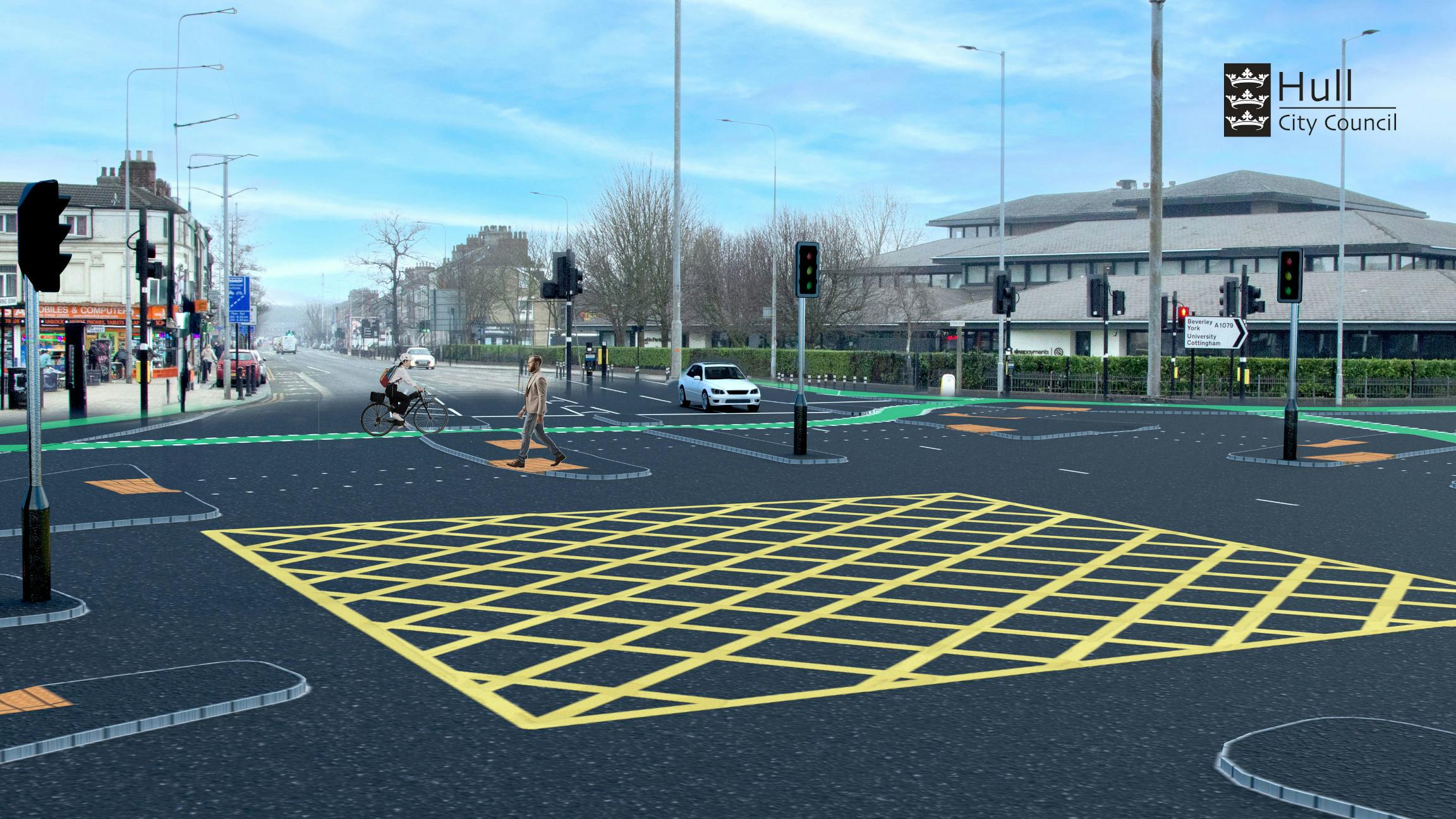Freetown Way Cycle Scheme
This consultation has now closed
The council has launched a six week engagement exercise to seek feedback from the public and other stakeholders on the proposed design of the new cycle scheme planned for Freetown Way.
Securing feedback on the scheme’s design is an important milestone and will help the council finalise the necessary documents for tender. A contractor will then be appointed to deliver the scheme, which is anticipated to start on site in Spring 2025.
The updated design for the scheme follows an initial round of consultation, which took place in 2022, and has incorporated various feedback received, including a more simplified design for the junction at Blundell’s Corner.
The scheme will see the footpaths on both sides of Freetown Way widened, between Witham and Blundell’s Corner, to accommodate safe, off-road cycle lanes, providing separate areas for both cyclists and pedestrians.
The scheme will also include -
- the separation of left turning traffic from straight ahead at junctions, to improve safety
- additional pedestrian crossings along the route
- early start signals to support the safety of cyclists
- improved facilities for pedestrians and cyclists at junctions
- removal of cycle lanes, along the road, across North Bridge and replacement with off-road cycle lanes
- removal of on-road cycle lanes at Blundell's Corner, and provision of an additional southbound traffic lane on Beverley Road
- new off-road cycle lanes around Blundell's Corner junction, fully separated from traffic and pedestrians
The scheme would also see the city’s first CYCLOPS junctions installed at Blundell’s Corner and Witham as well as Freetown Way’s junctions with Wright Street, Charles Street, Caroline Street/Worship Street and George Street.

You can complete the survey online if you wish to leave feedback about this scheme.
What a CYCLOPS Junction is
CYCLOPS junctions, or cycle-optimised protected signals junction, are appearing more and more in cities and towns across the UK.
The unique design of the CYCLOPs junction completely separates pedestrians and cyclists from motor traffic at junctions, reducing the possibility of collisions or conflict. Pedestrians are also able to get where they want to be in fewer stages with more space to wait than on other junction designs.
As well as minimising the number of potential signal phasing/stages to allow for movements around the junction, the CYCLOPS has other important benefits including -
- cyclist and pedestrian phases can run simultaneously
- pedestrian crossing times are shorter and closer to desire lines, including the potential for diagonal pedestrian crossings
- cyclists have protected right turn on a gentle radius and can filter left without signal control
- journey times for all modes navigating the junctions, including motor traffic, are not negatively affected.
How CYCLOPS junctions work
There are two movement ‘rings’ one 'ring' of the junction is a cycle path, acting like a roundabout with signal-controlled crossings. This will allow those who cycle to cross over the junction or make right turns unrestricted by cars or foot traffic, creating a safe route to travel.
The other 'ring' of the junction is dedicated to pedestrians, with those walking and cycling getting the same green light signal in all directions at the same time, but on a separate ring of paths in the middle of the junction.
There are well-defined zebra crossings on each side of the junction to provide a safe place to cross the cycle lane for pedestrians.
All motorised traffic stops at the lights whilst cyclists and pedestrians have their green light signal.
Once pedestrians and cyclists have passed, motorised traffic will get the green light signal to continue driving and use the junction like normal.





